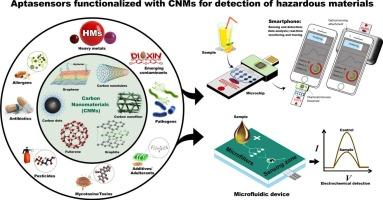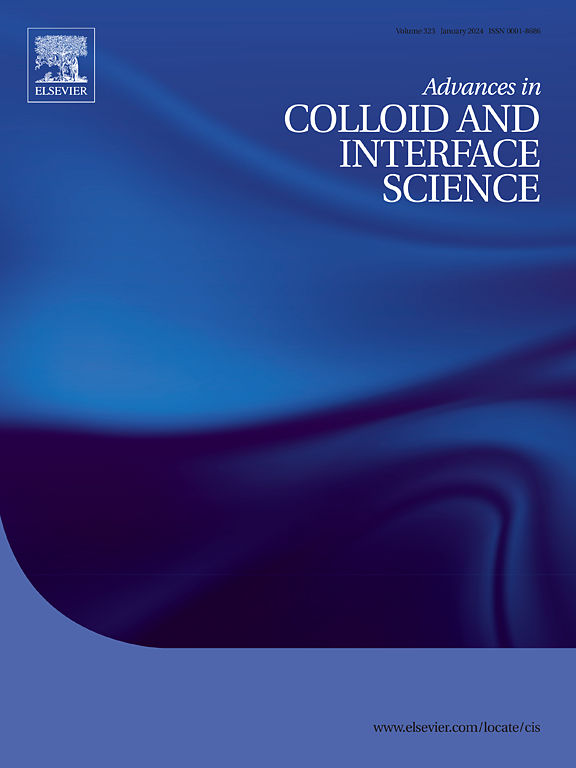Advances in aptasensors engineered with carbon nanomaterials for food safety monitoring
IF 19.3
1区 化学
Q1 CHEMISTRY, PHYSICAL
引用次数: 0
Abstract
Today, the smart sensing platforms concept has been programmable with multiplexed desired target emitters with the emergence of ultra-sensitive diagnosis on nanochip, lab-on-a-chips, and three-dimensional printed devices supporting decision-making with artificial-intelligence. Since carbon nanomaterials such as carbon nanotubes, carbon dots, carbon nanofibers, graphene, and carbon nitride etc., have unique properties such as high selectivity, specificity, and sensitivity, biocompatibility and sustainability, low or non-toxicity, ideal recognition and binding affinity, user-friendliness, variety, ease of preparation or use, and easy tunability, scalability, and modification compared to other nanomaterials, aptasensors decorated with carbon nanomaterials are being considered to monitor and audit food safety and quality control, environmental, bio/nanotechnology, and medicine to detect various targets like biomarkers, heavy metals, antibiotics, pesticides, allergens, and other contaminants. This review paper comprehensively and specifically investigates the characteristics, synthesis, and immobilization of aptasensors based on carbon nanomaterials. The use and integrity of carbon nanomaterials-functionalized aptasensors on portable and electronic devices (microfluidic chip/smartphone) for the tracking and analysis of different hazardous materials, targets, and biomarkers are also covered in this paper. Finally, it addresses how carbon nanomaterials -functionalized aptasensors may be used to monitor and identify targets in the environment and food chain. Therefore, commercialization and industrialization of carbon nanomaterials -functionalized aptasensors as “Lab-on-chip” systems facilitate the tracking and monitoring of hazardous materials/contaminants and various targets in the food chain and environment for consumers and beneficiaries using portable smart electronic tools. Nevertheless, to overcome possible limitations in the construction and introduction of multifunctional carbon nanomaterials -functionalized aptasensors with the capability to use in complex matrices as rapid, portable, and user-friendly, as well as disposable, online/offline and integrated sensors to detect and monitor hazardous material/targets is necessary, which has been highlighted in this study.

食品安全监测用碳纳米材料感应传感器的研究进展
如今,随着纳米芯片、芯片实验室和三维打印设备上超灵敏诊断的出现,智能传感平台概念已经可以用多路期望目标发射器进行编程,从而支持人工智能决策。由于碳纳米材料如碳纳米管、碳点、碳纳米纤维、石墨烯和氮化碳等,与其他纳米材料相比,具有高选择性、特异性和敏感性、生物相容性和可持续性、低毒或无毒性、理想的识别和结合亲和力、用户友好性、多样性、易于制备或使用、易调性、可扩展性和修饰性等独特的性质。用碳纳米材料装饰的适体传感器正被考虑用于监测和审计食品安全和质量控制、环境、生物/纳米技术和医学,以检测各种目标,如生物标志物、重金属、抗生素、杀虫剂、过敏原和其他污染物。本文综述了基于碳纳米材料的适体传感器的特性、合成和固定化。碳纳米材料功能化传感器在便携式和电子设备(微流控芯片/智能手机)上的使用和完整性,用于跟踪和分析不同的有害物质,目标和生物标志物,本文也涵盖了。最后,它讨论了如何使用碳纳米材料功能化的感应传感器来监测和识别环境和食物链中的目标。因此,碳纳米材料功能化的适体传感器作为“芯片实验室”系统的商业化和产业化,有助于使用便携式智能电子工具为消费者和受益者跟踪和监测食物链和环境中的有害物质/污染物和各种目标。然而,为了克服在构建和引入多功能碳纳米材料方面可能存在的限制,有必要将功能化的适体传感器作为快速、便携式、用户友好的、一次性的、在线/离线的和集成的传感器用于复杂基质中,以检测和监测有害物质/目标,这一点在本研究中得到了强调。
本文章由计算机程序翻译,如有差异,请以英文原文为准。
求助全文
约1分钟内获得全文
求助全文
来源期刊
CiteScore
28.50
自引率
2.60%
发文量
175
审稿时长
31 days
期刊介绍:
"Advances in Colloid and Interface Science" is an international journal that focuses on experimental and theoretical developments in interfacial and colloidal phenomena. The journal covers a wide range of disciplines including biology, chemistry, physics, and technology.
The journal accepts review articles on any topic within the scope of colloid and interface science. These articles should provide an in-depth analysis of the subject matter, offering a critical review of the current state of the field. The author's informed opinion on the topic should also be included. The manuscript should compare and contrast ideas found in the reviewed literature and address the limitations of these ideas.
Typically, the articles published in this journal are written by recognized experts in the field.

 求助内容:
求助内容: 应助结果提醒方式:
应助结果提醒方式:


